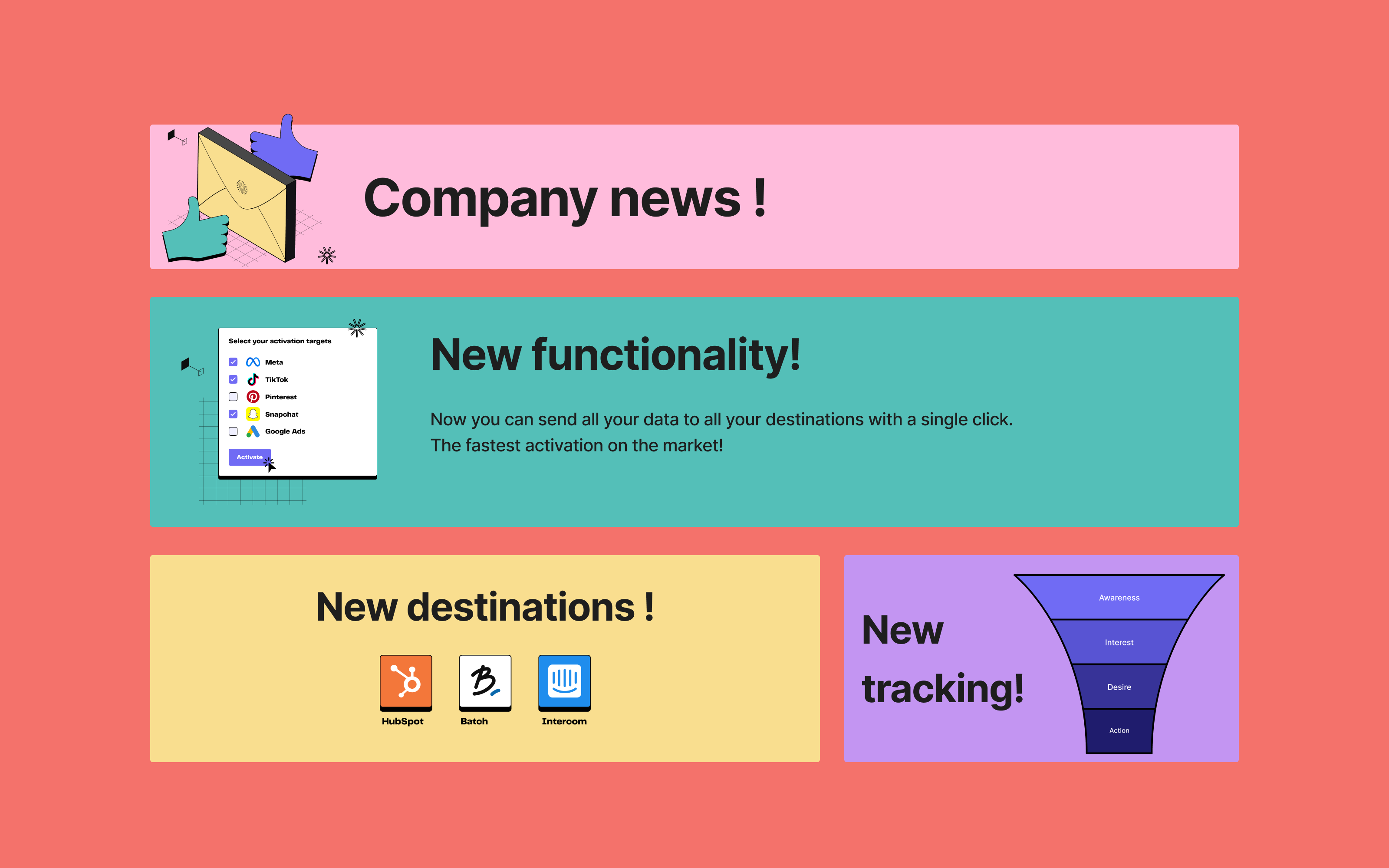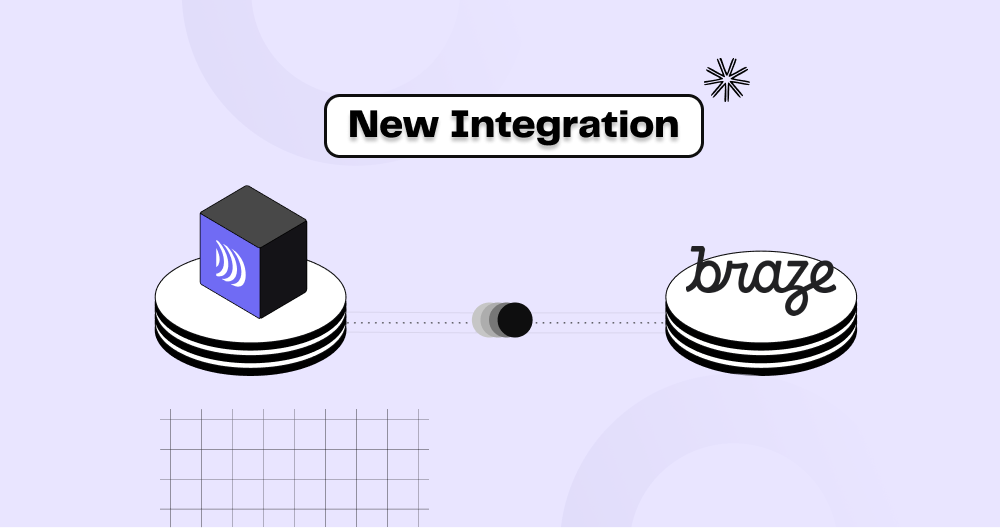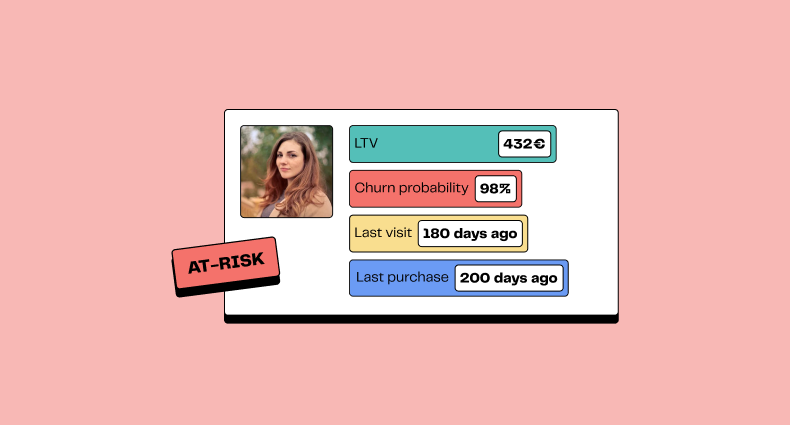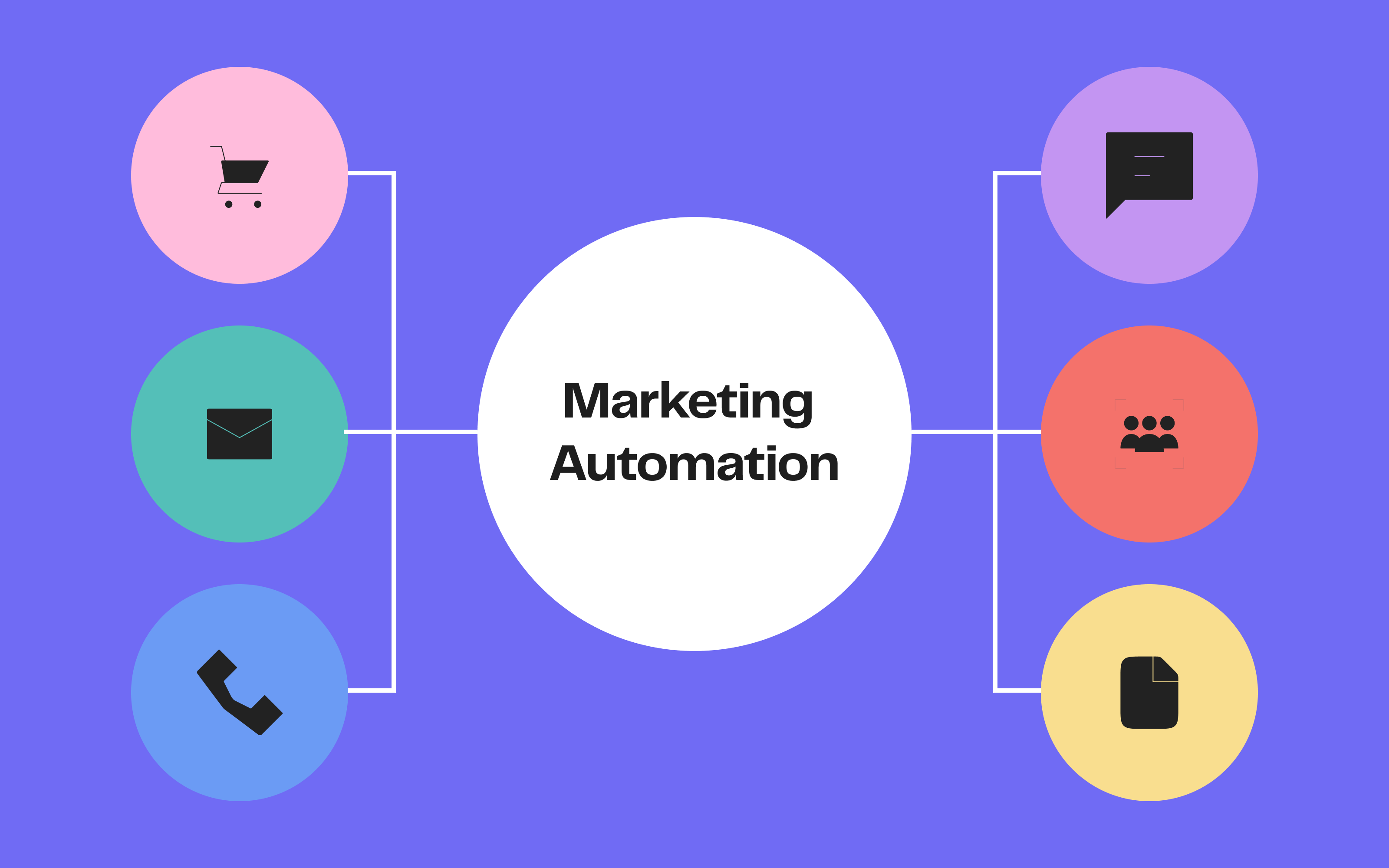
Best marketing automation campaigns
6min • Last updated on Dec 19, 2025

Alexandra Augusti
Chief of Staff
In an increasingly saturated digital landscape, marketing automation emerges as a crucial tool, enabling the automation of recurring marketing actions while providing enhanced personalization in interactions with prospects and clients using audience strategies.
This powerful lever represents an invaluable opportunity to save time, boost ROI, and strengthen customer relationships.
Marketing automation can unfortunately be a somewhat vague term, used whenever there's a minimum level of automation involved.
👉🏼 In this article, we present several marketing automation examples to deploy in order to maximize your efficiency.
What is Marketing Automation?
Marketing automation involves the adoption of software and technologies to automate recurring marketing tasks and refine communication with prospects and clients. This approach is an optimal strategy for saving time, maximizing return on investment, and increasing customer retention. It allows for more structured tracking and interaction with leads and clients.
Here’s an overview of the arguments that might convince you to adopt automation in your marketing strategies:
Free up time for marketing teams to focus on higher-value initiatives such as content creation, campaign organization, or analyzing insights. Instead of spending countless hours posting on social media, sending emails, or managing databases, software can handle these tasks automatically according to your instructions.
Improve conversion rates by providing prospects with tailored guidance at each stage of their buying journey through relevant and targeted content. With marketing automation, you can segment your audience, adjust messages based on behaviors and needs, and encourage timely actions. Utilizing a good CRM or even a CDP helps in optimized customer data management.
Increase customer satisfaction through more personalized communications aligned with their preferences. Marketing automation enables you to create unique customer experiences, whether through emails, social media, your website, or SMS. This helps in retaining customers and converting them into true brand advocates.
Centralize data and metrics within a single tool and dashboard. This significantly simplifies tracking campaign performance and allows for more detailed analysis.
Ultimately, marketing automation is a method that streamlines and enriches your marketing operations, while offering an enhanced experience to your prospects and clients.
Now that you're convinced of the value of marketing automation for your business, let’s explore some common marketing automation examples.
10 Common Marketing Automation Examples
Here are 10 common marketing automation scenarios that you can easily implement to boost your performance and enrich your client relationships.
💡 You'll see that most cases of marketing automation are for email campaigns (where hyper-personalization is de rigueur), but can also be used for other marketing tools.
Customer Segmentation Automation
Customer segmentation automation is an essential aspect of marketing automation as it lays the groundwork for all subsequent use cases.
To automate it, you can use advanced software to subdivide your contact base into uniform groups based on predefined criteria. The goal? Personalize and optimize your interactions with prospects and clients by considering their specific characteristics.
The audience can be segmented based on various criteria: demographic, geographic, behavioral, or psychographic. It's also possible to segment according to customer lifecycle, engagement level, or value potential. Essential for effective targeting, this segmentation automation requires periodic updates to adapt to evolving data and goals.
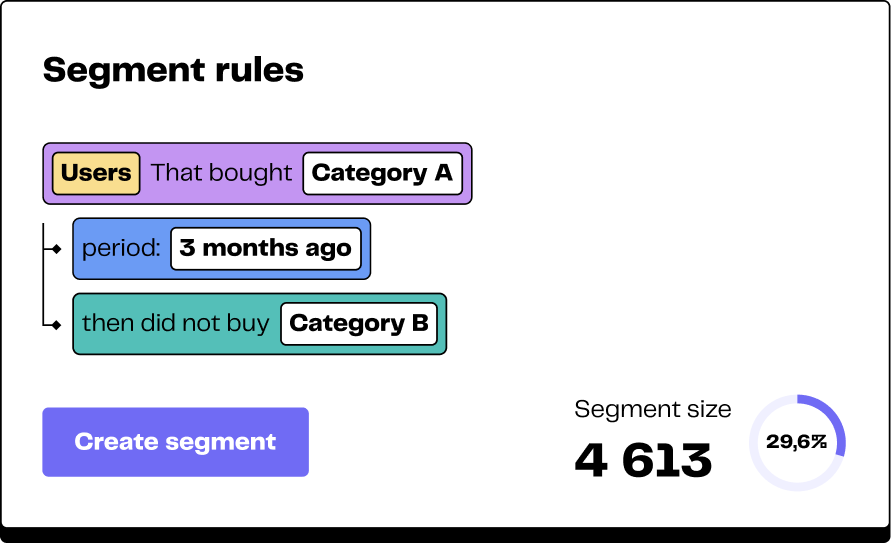
Welcome scenario
The first message we send to a new contact – one who has just created an account – is the welcome email. It’s the perfect moment to make a strong impression, introduce your brand, and outline what the contact can expect from you. The goal is to show the prospect that you’ll provide value, encouraging them to open your future emails!
You can also use this email to offer a specific promotion, educational resources, or invite them to follow you on social media.
The welcome email is sent immediately after the new contact signs up. Engagement begins with the initial exchanges, making this workflow crucial!
Note that some brands send only a single welcome email, while others have complete sequences, sending multiple communications in the days following registration. There are no strict rules here, but be careful not to over-communicate with your prospects, as this could prevent conversion.
Abandoned cart follow-up scenario
As the name suggests, the abandoned cart follow-up email targets contacts who have added items to their cart on your website but did not complete the purchase.
This is an opportunity to re-engage the contact, remind them of what they selected, highlight the product/service benefits, and address any potential hesitations.
To encourage conversion, you can offer a discount code, free shipping, or a satisfaction guarantee.
However, ensure the scenario remains effective by following these rules:
The first email should be sent within 24 hours of cart abandonment (ideally, a few minutes or hours after).
Avoid always including a promotion in the first email, as customers might expect it and delay their purchase.
Don’t rely solely on CRM campaigns: you can also retarget customers on your social media channels for a multi-touch strategy.
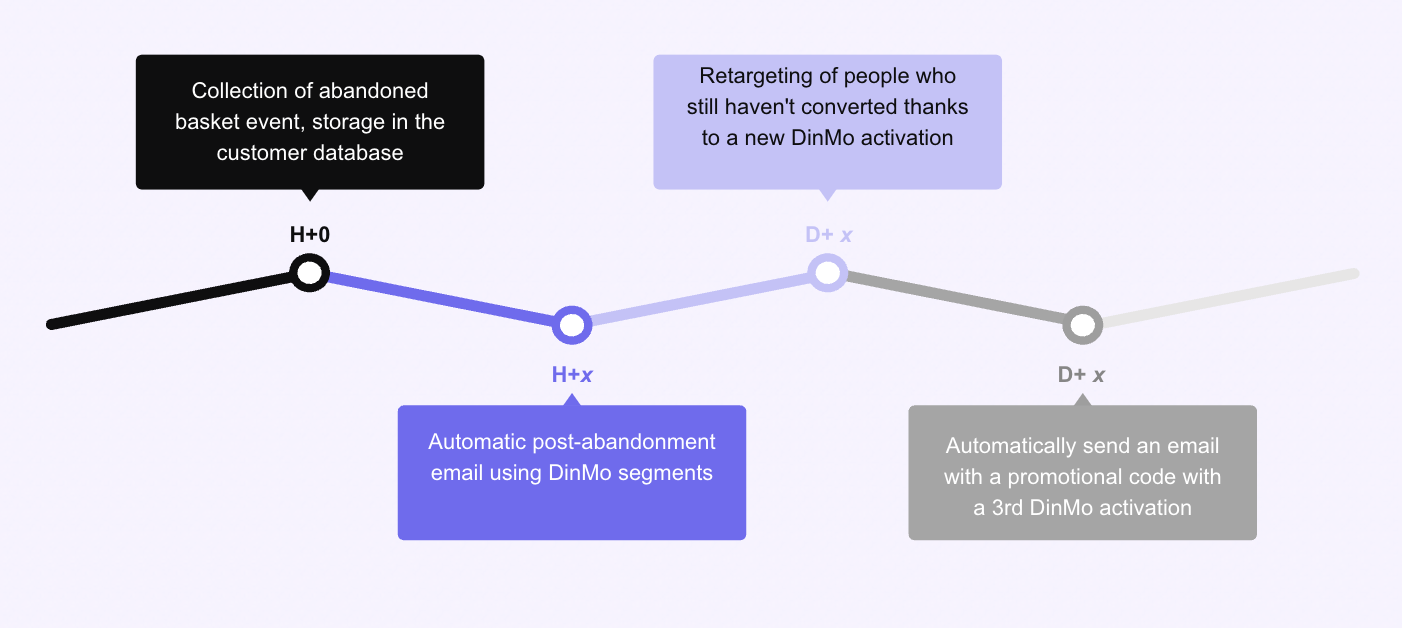
Illustration - Multicanal reactivation after cart abandonment
Customer loyalty "Thank you" scenario
Specific communications can be crafted to thank loyal customers who have made multiple purchases or used a service for a certain period. This scenario is a way to reward and strengthen the relationship, treating them like VIPs.
You can offer them early access to sales (such as private sales before discounts), exclusive benefits, loyalty points, or discounts on future purchases.
You can also inform them about the number of points they have and what they need to do to earn a reward or reach a higher status, encouraging a new purchase.
You can determine the trigger for this workflow: after a certain number of purchases, above a certain number of points, on a specific date, etc. You can also send such emails regularly to reinforce the customer relationship.
Event-based Scenario
In a world where customer attention and engagement are key assets, special attention to key dates (anniversaries, holidays, contract dates, etc.) becomes a powerful lever for personalizing interactions with your contacts.
This scenario offers the opportunity to show your attention and strengthen emotional bonds. You can offer a specific gift, a discount code, or content exclusively designed for the person. Note that you are not required to send an email (or SMS) but can also send a small token directly to the person. Few brands still use this method, so you can stand out with your most loyal customers!
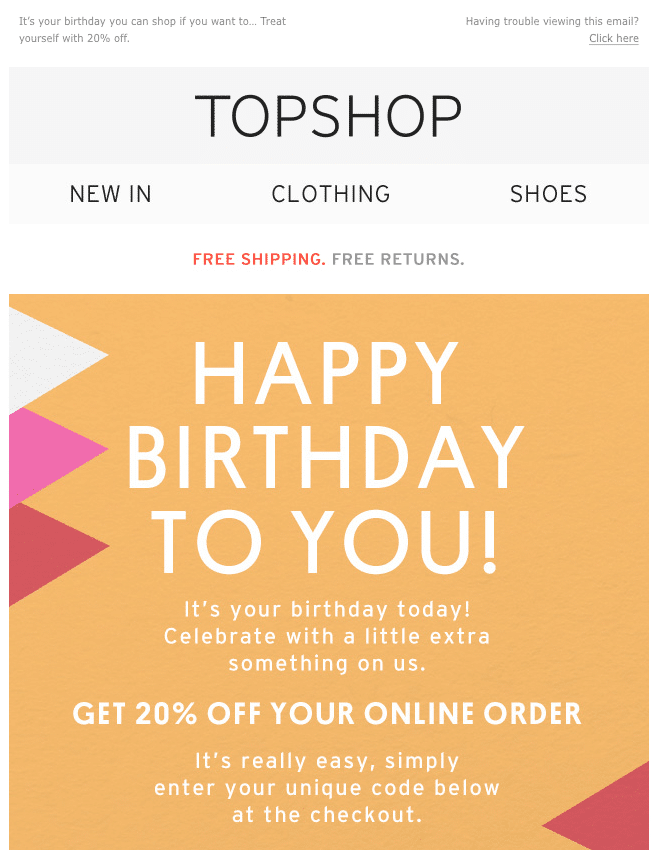
Topshop "Happy Birthday" Email
Encouraging your contact to share their experience or recommend your brand also amplifies the power of this scenario. Personally, I know all the brands that offer free cakes on my birthday, and I must admit that I am loyal to them 🙂
(PS: for more information on chocolate cakes 🍫, feel free to email me at alexandra@dinmo.com).
Re-engagement campaigns
For customers who have become passive with your brand, a re-engagement campaign is a vital strategy to rekindle their interest. This contact base should not be neglected and needs to be refreshed to maximize new conversions. Thus, the workflow targets passive individuals, reminding them of your brand's unique benefits while encouraging them to rediscover it.
Several re-engagement scenarios can be considered:
The customer hasn't purchased for a while but remains somewhat engaged with the brand (email openings, site visits, etc.). In this case, the customer isn’t lost! They are still attached to your brand but need a sufficient stimulus to purchase again. Engage them with contests, special offers, exclusive content, etc. The goal is to push them to take action!
The customer hasn't purchased for a while and shows no attachment to the brand. In this case, implement a reactivation workflow to refresh your contact list. You can send a special incentive to this specific segment of your customer base. At the end of your re-engagement campaign, positively responsive individuals are retained, and others are placed in an inactive status and receive no further communication.
In any case, this type of campaign triggers after a predefined period of inactivity, marking a potential turning point in the relationship.
Cross-selling and upselling automation
Maximizing the value of your current customers can also involve automated upselling campaigns. You can recommend complementary or superior products or services. This approach fosters a personalized customer experience by highlighting benefits and showcasing reassurance elements from other users.

Cross selling vs. up selling
Marketing automation facilitates the offering of more attractive deals to customers and represents an opportunity for brands to generate additional sales from their existing clientele.
For example, Netflix increased its average revenue per user by around 10% by using this strategy to promote higher-tier subscriptions. Subscribers are willing to pay more for additional features (image quality, no ads, offline viewing, etc.).
Prospect nurturing scenario
Stimulating leads throughout their decision-making journey is essential for converting initial interest into solid engagement. An effective workflow deployed to prospects who have shown preliminary interest in your offer is crucial for educating, informing, and ultimately convincing them about your brand. However, each communication should be tailored according to the stage of advancement of the lead in your funnel. You can also personalize content based on their profile and specific needs they might have expressed in various surveys. The goal of lead nurturing is to transform potential into actual conversion.
By automating lead nurturing, you ensure that the right message reaches the right person.
(Notably for B2B) You can also set up a workflow to score your leads and alert you when someone shows greater interest in your business. This allows you to define your own sales process to better address these priority prospects.
Sending a satisfaction survey
Another classic marketing automation example involves sending a satisfaction survey email to a customer after a purchase or service delivery.
This is an opportunity to gather their feedback, assess their satisfaction level, identify areas for improvement, and strengthen the trust relationship. The customer is invited to rate the product/service, answer a few questions, or leave a review.
As a thank you, you can offer a gift, a discount voucher, or exclusive access to specific content.
Note that this email should be sent a few days after the transaction or service usage.
Social media campaign automation
Marketing automation is not limited to email, SMS, or push notification campaigns.
Efficiently utilizing all the capabilities of social media involves automating campaigns. You can manage the scheduling and analysis of your content adeptly.
Publishing articles, videos, infographics, or testimonials becomes a matter of planning and precision, while proactive interaction management can be handled by team members (or automated, but ensure it remains human!).
⚠️ For this approach to be successful, it must respect the unique characteristics of each network, ensuring the reach and effectiveness of your actions.
Note that it is also possible to automate campaigns post-interaction with social media. For example, you can send personalized messages to people who have interacted with your brand on social media.
How to choose the right marketing automation tool?
To fully harness the potential of marketing automation, choosing the right software or platform is essential. This decision should be guided by your ability to design, manage, and evaluate the effectiveness of your campaigns. Additionally, developing a solid strategy, defining segmentation criteria, crafting content, and setting performance indicators are key steps to success. It is also crucial to adhere to best practices and ethical principles of marketing automation to avoid pitfalls like spam and maintain a high-quality relationship with your contacts.
🌟 At DinMo, we do not offer a marketing automation tool per se. Instead, we enable you to cover all the use cases mentioned above through our modular CDP approach. We offer to enrich and segment your customer base and automate the sending of these audiences to any of your business tools (ads, CRM, support, etc.) to implement these scenarios. If you want to learn more about our method, feel free to contact us!
Conclusion
In a world where marketing automation plays a key role in personalizing interactions with your prospects and clients, fully embracing this technique brings considerable benefits. Not only does it save you valuable time, but it also optimizes your return on investment and enhances customer loyalty.
The possibilities offered by marketing automation are vast and vary depending on your specific goals, industry, and audience characteristics. You are thus able to design customized customer journeys that not only streamline your marketing operations but also make them more effective. Well-designed workflows can transform prospects into loyal customers and ultimately support your sales efforts.


















